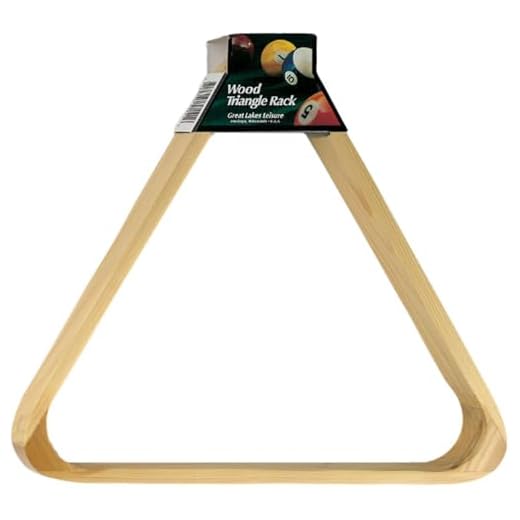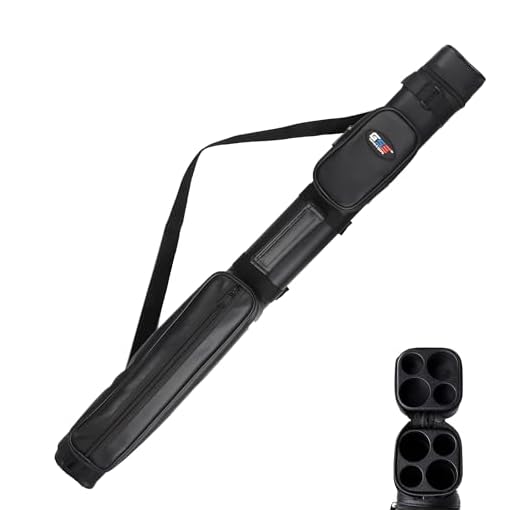
Cutthroat is a popular pool game, usually played with three players, where the objective is to pocket your opponents’ balls while protecting your own. The last player with one or more of their balls remaining on the table wins.
Here is a breakdown of the standard rules for a three-player game:
Table of Contents
Players and Ball Assignment
- Players: Ideally three players, but can be adapted for more (e.g., five players).
- Balls Used: A standard set of 15 object balls (numbered 1-15) and a cue ball.
- Groups (for three players): The 15 balls are divided into three groups of five:
- Player 1: Balls 1-5 (Low balls)
- Player 2: Balls 6-10 (Mid balls)
- Player 3: Balls 11-15 (High balls)
- Assigning Groups: Groups can be assigned before play begins, or players can claim a group after legally pocketing a ball. A common method is:
- The first player to legally pocket an object ball (not on the break) claims one of the three groups.
- The second player to legally pocket an object ball claims one of the two remaining groups.
- The third player is left with the last remaining group.
Setup and Break
- Racking: Use a standard triangle rack with the 1-ball at the apex (on the foot spot). The 6-ball and the 11-ball are typically placed in the two back corners. The rest of the balls are placed randomly. The rack should be tight.
- The Break: The first player breaks. A legal break typically requires at least four object balls to hit a rail or at least one object ball to be pocketed. If the break is illegal, the next player may accept the table as is or request a re-rack and break.
Gameplay
- Objective: To pocket the balls of your opponents, thus eliminating them from the game.
- Legal Shot: You must hit an opponent’s ball first. You are generally not allowed to hit one of your own balls first (this is a foul in many versions). A legal shot must also result in either:
- Pocketing a numbered ball.
- Causing the cue ball or any numbered ball to contact a rail.
- Continuing Turn: You continue shooting as long as you legally pocket any object ball on your shot. This means you can pocket an opponent’s ball to eliminate them, or even pocket one of your own balls to continue your turn, though this “cuts your own throat” by weakening your position.
- Turn Ends: Your turn ends if you miss a shot or commit a foul.
Fouls and Penalties
Common fouls include:
- Scratch: Pocketing the cue ball.
- Hitting Your Own Ball First: In many rule sets, the cue ball’s first contact must be with an opponent’s ball.
- Failure to Hit a Rail/Pocket a Ball: After the cue ball hits the first object ball, a ball must be pocketed or the cue ball or an object ball must hit a rail.
- Jumping a Ball off the Table.
Penalty for Fouls:
- The shooter’s turn ends.
- One pocketed ball from each opponent’s group (if they have any pocketed) is spotted (returned) to the table. This is a crucial rule—it punishes the fouler and can bring an eliminated player back into the game!
- If the foul was a scratch or cue ball jumped off the table, the incoming player gets cue ball in hand (typically behind the head string).
Elimination and Winning
- Elimination: When all of a player’s assigned balls are pocketed, they are eliminated from the game. They remain eliminated unless an opponent commits a foul, which can spot one of their balls back onto the table, reinstating them.
- Winning: The game ends when all balls belonging to all other opponents have been legally pocketed. The last player with at least one ball remaining on the table is the winner.
Note on Variations:
Like many casual pool games, Cutthroat often has “house rules” variations. Be sure to agree with all players beforehand on specifics like:
- Do you have to call your shots (call shot) or can you pocket any ball into any pocket (slop)?
- Does hitting your own ball first always result in a foul?
- Where exactly does the cue ball go after a scratch?
Deeper Dive into Gameplay and Rules
The “Cut Your Own Throat” Clause
A key strategic element in the most common version of Cutthroat is the rule allowing you to continue your turn by pocketing any ball, including one from your own group.
- Benefit: Pocketing one of your own balls allows you to keep shooting, potentially clearing the table of an opponent’s balls or simply improving the position of the cue ball for a crucial next shot.
- Drawback: The immediate downside is that you are closer to being eliminated. This trade-off—sacrificing your safety for a tactical advantage—is where the game gets its name.
The Significance of the Foul Penalty
The penalty for a foul (scratch, illegal shot, etc.) is the engine that keeps the game competitive and can instantly bring an eliminated player back into the action.
- Reinstatement: When a player fouls, one pocketed ball from each opponent’s group is spotted (returned) to the table.
- If a player was already eliminated (all their balls were pocketed), this penalty immediately reinstates them by placing one of their balls back on the table.
- This makes fouls extremely costly and encourages safe, defensive play, especially when one or two opponents are close to being eliminated.
Legal Shot Clarification (The Defensive Rule)
Many formal and league rules require more than just pocketing a ball. They stipulate what is often a defensive measure:
- First Contact: The cue ball must first contact an opponent’s object ball.
- Result: After contact, either:
- A ball must be pocketed, OR
- The cue ball or any object ball must contact a rail.
This rule prevents players from simply hitting an opponent’s ball and deliberately leaving a terrible shot for the next player without a consequence. Failure to meet these requirements is a foul.
Advanced Strategy and Tactics
Cutthroat is a game of shifting alliances and calculated aggression. The goal is not just to make shots, but to survive.
| Tactic | Description |
| Early Game Discretion | Avoid claiming your group too early. Until all three groups are claimed, opponents can’t be sure which balls to target, allowing you to focus on eliminating the most vulnerable group or the most skilled player. |
| Defensive Positioning | Protecting your own balls is paramount. Leave your remaining balls in difficult places: touching a rail, clustered together, or hidden behind an opponent’s ball. This forces an opponent to take a risky shot or play a safety. |
| Target Selection | Often, the smart move is to target the strongest player first to eliminate them from the rotation. However, if a weak player only has one ball left, pocketing it is an easy way to reduce the number of threats on the table. |
| The “Sacrifice” Shot | Use the “cut your own throat” rule strategically. If an opponent has a clear run, pocketing one of your own balls (legally) to keep shooting can allow you to then play a safety shot on the cue ball, disrupting their offense and protecting your own group. |
| Safety Play | This is the most crucial skill. Use your turn to leave the cue ball in a spot where the next player has no legal shot, forcing them to commit a foul and potentially bringing your own pocketed balls back into play. |
| Managing the Runout | When it’s down to two players, the game often changes into a two-person strategy game. Focus all efforts on the opponent’s balls while making sure your final ball is near a rail or completely safe from any combo or carom shot. |
Variations and House Rules
Since Cutthroat is a highly social game, numerous “house rules” and variations exist. Always clarify these before playing!
| Variation | Description |
| Call Shot vs. Slop | Call Shot requires the shooter to name the object ball and the pocket (e.g., “6-ball in the side”). Slop allows any legally hit ball to count, regardless of the pocket intended. Most casual play is slop. |
| Ball-In-Hand After Scratch | After a scratch, the incoming player either gets Ball-in-Hand anywhere on the table, or only Ball-in-Hand Behind the Head String (in the kitchen). The latter is generally more restrictive and defensive. |
| No-Scratch-Out Rule | Some players have a rule that you cannot win the game on a scratch. If you pocket an opponent’s last ball but scratch the cue ball, the opponent’s ball is spotted, and the win is negated. |
| Playing with 4 or 5 Players | The rules can be adapted: 4 Players: Each player takes 3 balls, leaving three balls unassigned (1-3, 4-6, 7-9, 10-12, with 13-15 unassigned). 5 Players: Each player takes 3 balls (1-3, 4-6, 7-9, 10-12, 13-15). |
| Rotation Cutthroat (Advanced) | A very difficult variation where players must always ensure the cue ball’s first contact is with the lowest-numbered opponent’s ball on the table. This adds an element of rotation/sequential play to the cutthroat objective. |
| Coin-Operated Tables | Since balls can’t be spotted on coin-op tables, the penalty for a foul is often that the fouler must select one of their own remaining balls to be removed from the table and placed in the pocket return, effectively giving them a one-ball penalty. |
Conclusion
To sum up, cutthroat is a unique and engaging pool game that successfully marries offense, defense, and calculated risk, making it far more strategic than many standard pool variations.
The game’s dynamic nature stems from a few key factors:
- Direct Conflict: Unlike 8-ball or 9-ball, your objective is to directly eliminate your opponents by pocketing their balls, creating immediate competition and shifting alliances.
- The Foul Penalty: The rule that reinstates eliminated players when a foul occurs forces every active player to prioritize safety. A seemingly simple scratch can completely reverse the game’s momentum.
- The “Cut Your Own Throat” Tactic: The option to pocket your own balls to maintain a turn introduces a crucial layer of tactical depth. Players must constantly weigh the immediate benefit of continuing a run against the long-term risk of self-elimination.
Ultimately, winning Cutthroat is less about pure run-out skill and more about superior defensive strategy, cue ball control, and political maneuvering (i.e., deciding which opponent to target first). Before starting, remember to clarify the house rules regarding calling shots and foul penalties to ensure a fair and competitive game.
FAQ
Here are some frequently asked questions and clarifications about playing Cutthroat pool:
Is Cutthroat a game of offense or defense?
It is a game of both, but strong defense is often the deciding factor. Since fouls can bring opponents back into the game (via spotting their balls), players must focus on leaving the cue ball safe rather than simply chasing difficult offensive shots.
What happens if I accidentally pocket one of my own balls?
In most standard rule sets, pocketing one of your own balls is not a foul but is called “cutting your own throat.” It allows you to continue shooting, but you are now closer to being eliminated. However, if your cue ball hits one of your own balls first before an opponent’s ball, that is a foul.
How many players is Cutthroat designed for?
Cutthroat is ideally designed for three players, each taking five balls (1-5, 6-10, 11-15). It can be adapted for five players (each taking three balls) but is generally not recommended for four players unless you use adjusted ball assignments.
When is my ball group officially "chosen"?
This varies by house rule. The two most common methods are: 1) Pre-assigned before the break, or 2) A player claims their group immediately after legally pocketing the first object ball (not on the break).
What happens if I scratch after pocketing an opponent's last ball?
In most versions, you do not win. Since the scratch is a foul, the opponent’s ball is usually spotted back on the table, and they are back in the game. This rule prevents winning the game on an illegal shot.
Am I still a player after I'm eliminated?
No, once all of your balls are pocketed, your turn is skipped. However, you are reinstated (put back into the game) if a player still in the game commits a foul, as one of your pocketed balls will be spotted back on the table.
Does the 8-ball have any special role?
No. Unlike 8-Ball, the 8-ball (and all other numbered balls) is just another object ball in its assigned group. You can pocket it legally just like any other ball from an opponent’s set.



